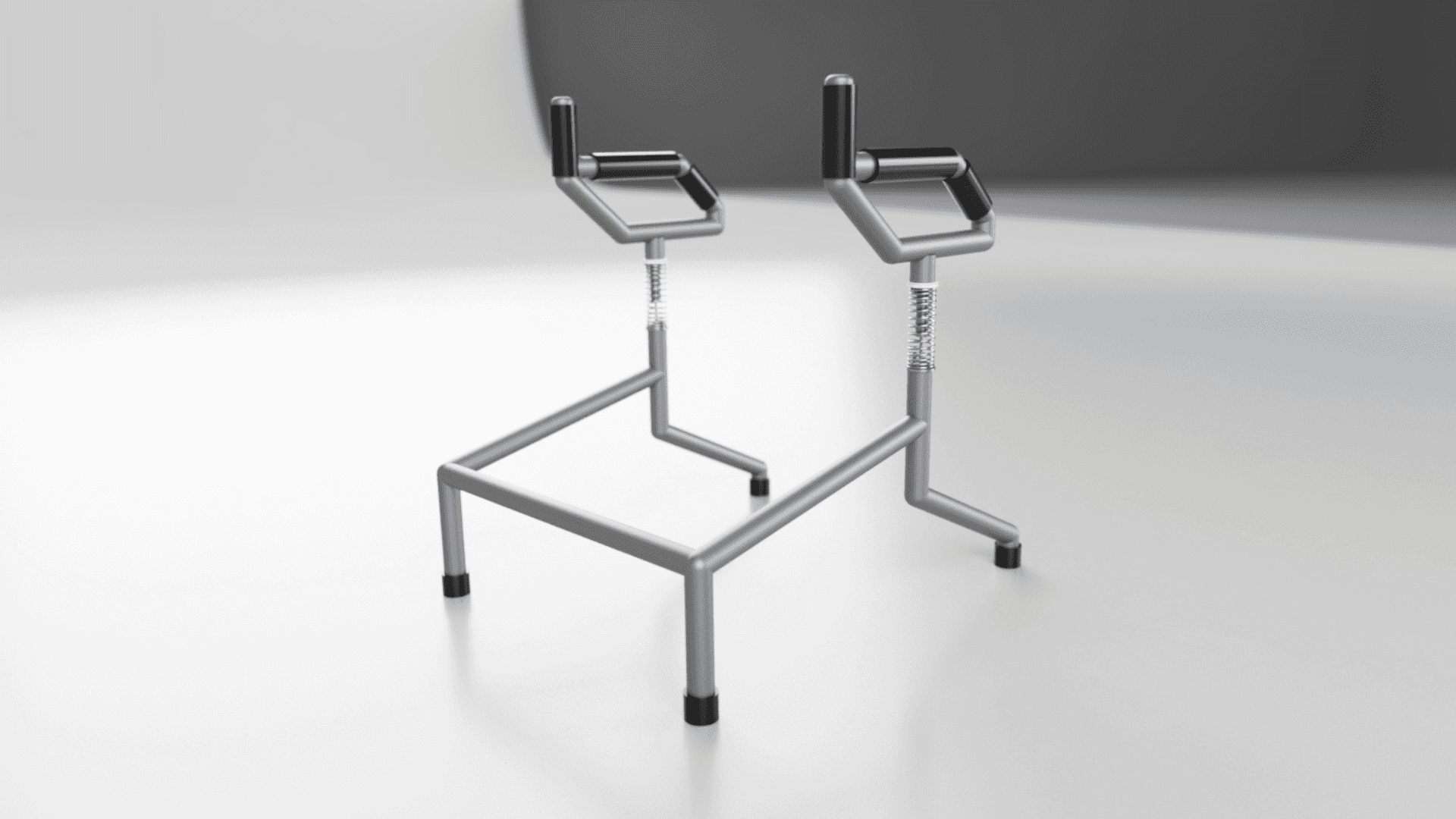StrideEase
The redesigned walker, StrideEase, is built for enhanced mobility and comfort, specifically addressing the challenges of climbing stairs and absorbing shocks. It features a lightweight and ergonomic design with integrated shock absorbers for smooth transitions on various surfaces. The walker ensures user safety and stability, allowing for confident movement both indoors and outdoors. The innovative design aims to improve users' independence and quality of life by making walking and navigating stairs easier and more comfortable.
Duration
15 weeks
Role
Product Designer
Project Type
Group Project
Problems
Size and Weight: Many walkers are bulky and heavy, making them difficult to maneuver for older adults or those with limited strength.
Limited Mobility: Walkers can restrict mobility, making it challenging to navigate tight spaces or uneven terrain.
Stability Limitations: There is a risk of tipping over, especially if walkers are not used correctly or on uneven ground.
Uncomfortable Grips: Hand grips can cause discomfort or blisters during prolonged use.
Posture Issues: Improper adjustment or prolonged use may lead to poor posture, exacerbating back or neck problems.
Uneven Terrain: Walkers struggle on uneven surfaces like gravel, grass, or stairs, increasing the risk of tripping or falling.
Solution
Enhanced Stability Features: Incorporated a wider base and stability mechanisms to reduce the risk of tipping over on uneven ground.
Ergonomic Grips: Designed hand grips that were comfortable and reduced the risk of blisters, enhancing user comfort during prolonged use.
Adjustable Components: Ensured easy adjustments for height and support to promote proper posture and prevent back or neck issues.
Adaptability for Terrain: Equipped the walker with features that improved performance on uneven surfaces, such as wider wheels or shock absorption systems.
Lightweight Design: Developed a walker that was lightweight and easy to maneuver, ensuring convenience for users with limited strength.
Design Process
Studied Existing Models: Analysed various walker designs to understand their strengths and weaknesses.
Identified Pain Points: Gathered insights on common user challenges and limitations faced with current walkers.
Created Ideation Sketches: Developed initial design concepts through sketches to explore various solutions.
Conducted User Interviews: Engaged with potential users to gather feedback and understand their specific needs and preferences.
Developed CAD Model: Created a detailed computer-aided design (CAD) model of the selected concept for further refinement.
Built Final Prototype: Constructed a physical prototype based on the CAD model to evaluate the design in real-world conditions.
Performed User Testing: Conducted tests with users to assess functionality, comfort, and overall usability, gathering feedback for improvements.
Project Learnings
User-Centric Design: Gained valuable insights into the importance of prioritizing user needs and preferences throughout the design process.
Research Skills: Enhanced skills in researching existing models and identifying pain points effectively, leading to informed design decisions.
Sketching and Ideation: Improved ideation skills through sketching, allowing for quick exploration of various design concepts.
Interview Techniques: Developed effective user interview techniques to gather meaningful feedback and insights directly from potential users.
CAD Proficiency: Strengthened CAD modeling skills, enabling precise and detailed designs for prototyping.
Prototyping Experience: Learned the significance of building and testing prototypes to evaluate design concepts in practical scenarios.
Iterative Design: Understood the iterative nature of design, recognizing that feedback from user testing is crucial for continuous improvement.





